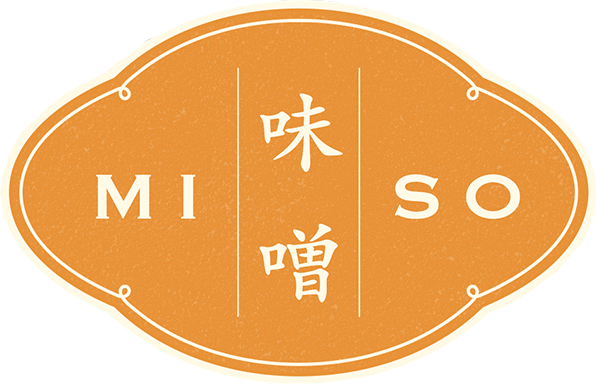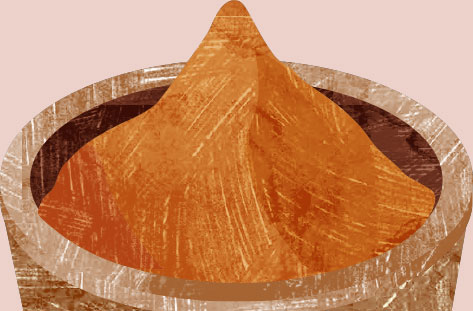A Japanese traditional fermented seasoning
CONTENTS

Japan's traditional fermented seasoning with endless diversity -MISO-
Washoku was registered as an UNESCO Intangible Cultural Heritage in 2013. Washoku is known for use of fresh, diverse ingredients, culinary methods that respect the original flavor of the ingredients, nutritional balance that supports healthy lifestyles, presentations that focus on natural aesthetics and changes in the seasons, and close correlations with festivities that occur throughout the year. These characteristics of Washoku are garnering attention from around the world.
MISO, which is made from the simple combination of soybeans, koji, and salt, is a traditional fermented seasoning that is an indispensable part of Washoku. Created throughout Japan, MISO is something that can remind anyone of the tastes of hometown cooking. At the same time, famous chefs from around the world have been drawn to the features and flavors of MISO, boldly incorporating MISO into their recipes and expanding the possibilities of MISO.
We hope this pamphlet helps provide a deeper understanding of the incredibly diverse food ingredient, MISO.
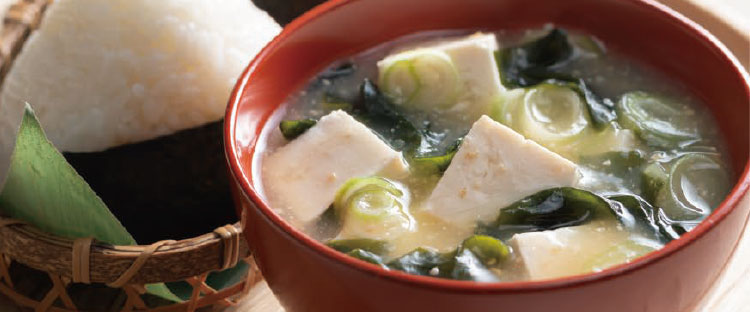

MISO is a simple food made by combining soybeans, Koji*1, and salt, and allowing this mixture to ferment and age.
Here, we introduce the story of MISO to see why this storied food is so popular.
Koji fungus becomes a national treasure
MISO is a traditional fermented food of Japan that, similar to yogurt or cheese, born from power of nature.
The koji bacteria used in MISO fermentation contains numerous enzymes and is a bacteria used to create koji, which adds sweetness and flavor to food. Japanese koji bacteria is unique to Japan and is designated as a National Bacteria*2.
Geographically, Japan is a long country that extends to the north and south, which results in climate differences. The grains such as soybeans, barley, and rice used as the main raw ingredient in MISO will vary in type depending on differences in the regional climate and soil.
These differences are used to create MISO with regional characteristics and flavor profiles similar to what is seen with different kinds of wine.
Did MISO originate in China or Japan?
Some theories date the origins of MISO back to 700B.C. when a something eaten in China was introduced to Japan. Other theories suggest that a food similar to MISO was already being eaten in Japan during the Jomon Era (approx. 13000 to 2300 years earlier). It is estimated that the food known as Japanese MISO was created some time during the Heian Era (794 to 1184).
MISO was popularized during the Kamakura Era (1185 to 1333) and by the Muromachi Era (1336 to 1573), people were consuming miso soup*3. During the Waring States Period (Sengoku Era), a powerful Feudal Lord*4 produced MISO as a staple for his armies, using the food enhance the power of the nation.

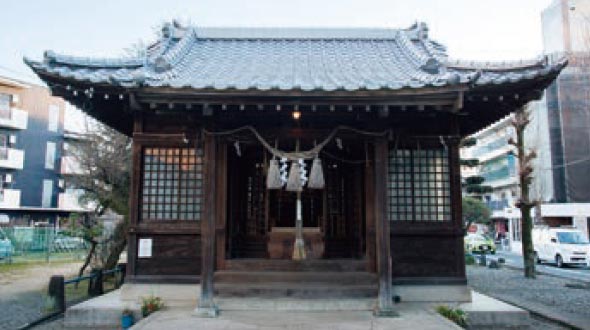
During the Edo Era (1603 to 1868), MISO was being produced in lands across the country as an important staple supporting the city of one million people (Edo, modern-day Tokyo), and people began making MISO at home as well. This period gave birth to diverse dishes made using MISO, forming the foundation of Japanese food culture. By the Meiji Era (1868 to 1912), MISO was being mass produced and by the Showa Era (1926 to 1989), various forms of MISO were being made, including low-sodium MISO and MISO containing dashi (soup stock) flavoring.
In 2013, WASHOKU, traditional Japanese cuisine, was designated as a UNESCO Intangible Cultural Heritage, which has led to MISO garnering attention from people around the world.
- Created by adding bacteria with effective food fermentation properties to grain and promoting koji fungus growth. A critical part of MISO fermentation and aging.
- In 2006, koji fungus (Aspergillus oryzae) was certified as a National Bacteria by the Brewing Society of Japan.
- One type of soup common in Japanese cuisine. A soup stock is flavored with MISO and combined with ingredients such as vegetables, tofu, and seafood.
- Powerful warriors who held massive lands and numerous followers.
SCROLL
History of miso
BC/AD
7th Century
8th Century
9th Century
13th Century
14th Century
17th Century
21th Century

Made a food similar to MISO using acorns
Soy sauce introduced to Japan from China
Original form of MISO created
KINZANJI MISO handed down
MISO provided to warriors as food
MISO becomes strategic staple
MISO spreads, becomes part of food culture
Mass production
UNESCO Intangible Cultural Heritage
 Japan
Japan
Jomon – Yayoi – Kofun periods
Asuka period
Nara period
Heian period
Kamakura period
Muromachi period
Azuchi-Momoyama period
Edo period
Meiji to Reiwa periods

The process of creating MISO
MISO, a fermented food created by Japan’s climate and soil.
How do they create a flavor that is loved around the world by gourmet aficionados?
A MISO for each type of koji
Different MISO are manufactured for each type of koji used (rice, barley, soybeans). Rice MISO is made by adding rice koji to soybeans, barley MISO is made by adding barley koji to soybeans, and bean MISO is made from soybeans and soybean koji starters*1.
The basic manufacturing process is soybean processing > koji making*2 > mixing and preparation > fermentation > adjustment.
Each finished MISO has its own unique flavor and richness while mixed MISOs that combine the strengths and flavors of various types to create new tastes are also popular.
MISO is classified according to the type of koji bacteria, such as rice koji, barley koji, and soybean koji, the differences in taste, such as sweet MISO, mild MISO, and dry MISO, and differences in color, such as white MISO, light MISO, and red MISO.
- A type of koji that uses special bacteria that cultivates well in soybeans.
- Creating koji by cultivating koji bacteria in grains such as rice, barley, and soybeans.
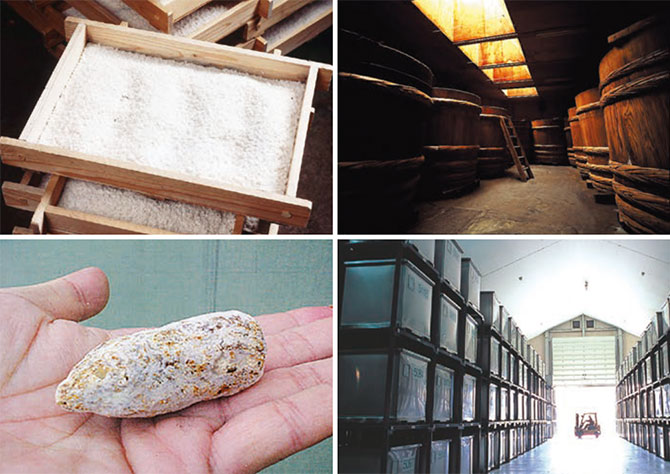
MISO manufacturing process by type
RICE / BARLEY MISO





SOYBEAN MISO






Types of MISO
The main types of MISO are as follows. MISO are divided into three categories based on the type of malt, which is essential for fermentation and aging, the taste, such as sweet or dry, and the color, which is based on the appearance.
1. Koji
The flavor of MISO is determined by the koji bacteria (Aspergillus oryzae), a type of mold. The rice, barley, and soybeans are steamed, and koji mold is added to promote cultivation. Depending on the koji used, this is categorized as rice miso, barley miso, or soybean miso, with mixed miso being a mixture of these.

2. Flavor
MISO can be divided into sweet MISO, mild MISO, and dry MISO. The degree of saltiness varies depending on the amount of salt used and the ratio of koji. The ratio of koji refers the ratio of koji ingredients (rice and barley) to soybeans, the main ingredient of MISO. If the amount of salt is the same, then the miso with a higher ratio of koji ingredients will be sweeter, with differences based on the aging period and manufacturing method.

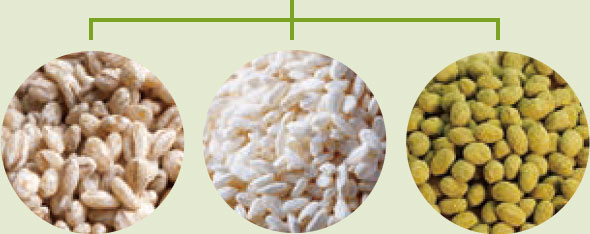
3. Color
For color, MISO is categorized as white MISO, light MISO, or red MISO. The main reason for the differences in color is the length of time (brewing period) required for fermentation and maturation. Generally, the longer the brewing period, the darker the color. The color of miso is also affected by factors such as whether the main ingredient soybeans are steamed or boiled, the length of the steaming time, and the amount of raw materials and koji.
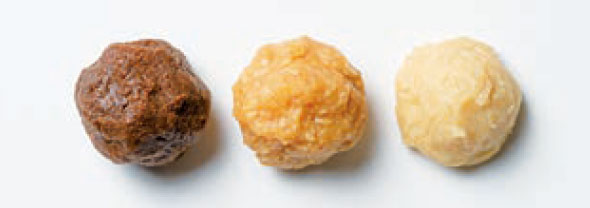

MISO nutrition and effective nutrients
MISO contains many nutrients and active ingredients. The fact that the average life expectancy of Japanese people, who have eaten MISO as a staple of their diet, is the highest in the world could be due to the benefits of MISO.
Contains vast quantities of healthy nutrients
Miso is made by fermenting soybeans with koji (made from rice, barley, or soybeans) and salt. The main nutrients per 100g of MISO are 3-11g of fat, 10-17g of protein, 15-38g of carbohydrates, 4-7g of dietary fiber, and 6-13g of salt*1.
MISO also contains many vitamins and minerals, such as soy isoflavones, which help maintain the components of bones, vitamin E and soy saponin, which have beauty benefits.
The average life expectancy of Japanese people is 84.3 years, the highest in the world*2. This is said to be due to healthy eating habits such as eating MISO every day. There have been numerousreportsissued by research institutes on benefitsrelated to health improvement and cancer risk reduction, including reports that “Women with higher MISO intake the lower the risk of death*3 ” and that “the risk of breast cancer decreases as MISO intake increases*4.”.
- From the Standard Tables of Food Composition in Japan 2020 Edition (8th revision). Rounded to the nearest whole number.
- From "World Health Statistics 2022: Monitoring Health for the SDGs, Sustainable Development Goals" announced by WHO.
- National Cancer Center: Relationship between intake of soy foods and fermented soy foods and mortality risk, 2020.
- Central Research Secretariat, National Cancer Center Prevention Research Group: Relationship between soy isoflavone intake and breast cancer incidence, 2003.

Delicious taste enhanced with the addition of miso MISO recipe
Sandwich with miso
Miso plays an important supporting role as a seasoning not only in Japanese cuisine, but also in cuisines from various countries and regions. It goes well with meat, fish, vegetables, and dairy products.
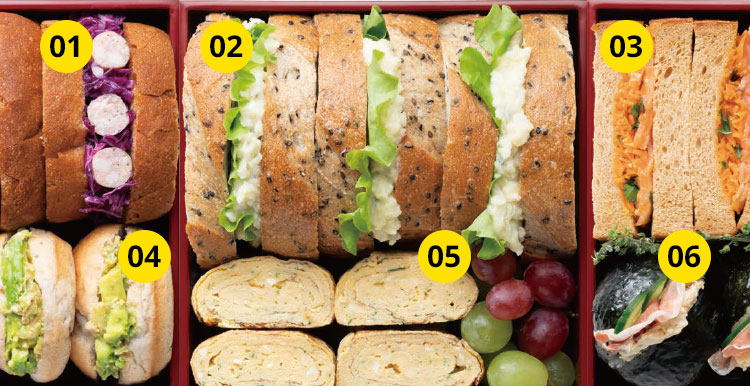
-
Sausage and purple cabbage sandwich with MISO
Ingredients
Rice miso 2 tsp Sausages 4 Purple cabbage 1/4 Yogurt 1 tbsp Mustard (w/ seeds) 1 tsp Salt 1/4 tsp Your preferred bread 2 slices note
The purple cabbage mixed with miso, yogurt, and mustard is very colorful and goes well with sausage.
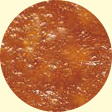
-
Gorgonzola and white MISO sandwich
Ingredients
Rice miso (white) 1 tsp Gorgonzola cheese 20g Large potato 1 honey 1 tsp Leafy lettuce Desired amount Salt 1/4 tsp Your preferred bread 2 slices note
The sweetness and richness of white miso combined with fluffy potatoes, gorgonzola, and honey.

-
Smoked salmon and carrot salad MISO sandwich
Ingredients
Barley miso 1 tsp Smoked salmon 5 slices Carrot 1/2 Marmalade 1 tsp Italian parsley 1 sprig Lemon juice 2 tsp Olive oil 1 tbsp Cumin seeds 1/2 tsp Salt 1/4 tsp Your preferred bread 2 slices note
A bright color combination of smoked salmon and carrots. Using barley miso adds richness and flavor.
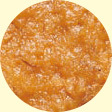
-
Tuna & miso mayonnaise sandwich
Ingredients
Rice miso 1 tsp Avocado 1 Can of tuna 1 Mayonnaise 2 tbsp Lemon juice 2 tsp Your preferred bread 2 slices note
Avocado and tuna are combined with miso and mayonnaise. Lemon juice is added to stop the color of the avocado and give it a refreshing taste.

-
Fried omelet with chive miso
Ingredients
Rice miso (white) 2 tbsp Eggs 4 Dashi stock 1 tbsp Chives 1 tbsp Salad oil As needed note
An appetizing omelet with the aroma of chives. White miso adds sweetness and richness.

-
MISO cream cheese rice ball (onigiri)
Ingredients
Rice 320g (80g each) Seaweed 2 sheets
(1/2 sheet per serving)Salt A little Rice miso 2 tsp Cream cheese 40g Dry-cured ham 4 slices Cucumber 1/4 Leafy lettuce 1 piece note
Onigiri is delicious not only with Japanese ingredients, but also cheese and uncured ham. Miso and cheese, which are both fermented foods, go well together.

Dipping sauce with miso
Miso is also a seasoning to enjoy in various combinations. Add oils and fats increases richness and umami, add vinegar and citrus fruits provide a sour taste, or add sugar or honey for a mellow sweetness. Experiment with other spices and herbs to find your favorite combination.
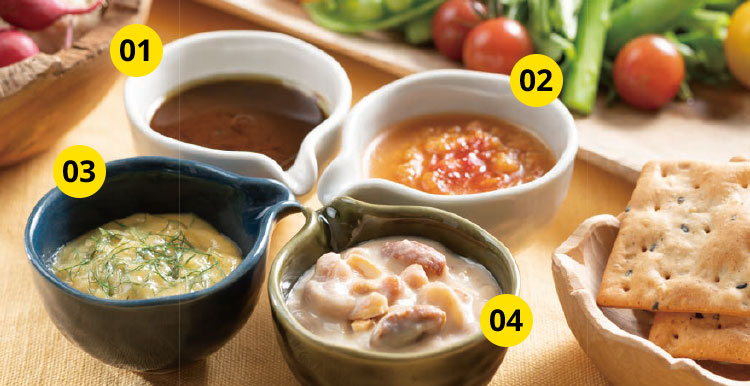
-
IngredientsMiso garlic sauce
Ingredients
Soybean miso 3 tbsp Rice vinegar 2 tbsp Extra virgin oil 2 tbsp Grated garlic 2 tsp Honey 2 tbsp note
A flavorful garlic sauce that can also be used as a sauce for grilled meats and fish.
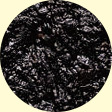
-
Miso anchovy sauce
Ingredients
Rice miso 2 tbsp Butter 3 tbsp Paprika powder 1/4 tsp Anchovy fillet (coarsely chopped) 1 note
Synergy from the umami of anchovies and the richness of miso. Addictive when eaten with vegetables and a baguette.

-
White miso dill sauce
Ingredients
Rice miso (white) 3 tbsp Mayonnaise 3 tbsp Dill (remove leaves and chop coarsely) 2 sprigs note
Miso mayonnaise sauce with a refreshing dill flavor. Goes well with vegetables as well as meat and fish dishes.

-
White miso yogurt sauce
Ingredients
noteRice miso (white) 3 tbsp Yogurt 3 tbsp Mixed nuts (coarsely crushed) 1 tbsp note
The refreshing acidity of yogurt and the richness of white miso go well together. The texture of crushed nuts is also good. It is also delicious to marinate meat or fish in the sauce and grill it.

Sweets made with miso
Miso is also a great supporting role that enhances the sweetness of desserts. Richness and flavor increase, and you can enjoy a gentle taste full of nourishment
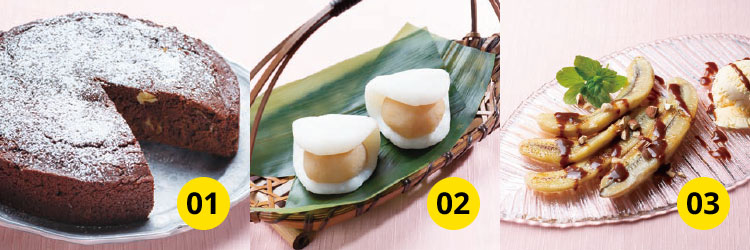
-
Soybean miso brownies
Ingredients
Soybean miso 20g Chocolate 200g Unsalted butter 100g Sugar 100g Eggs 3 Cake flour 120g Baking powder 2 tsp Walnuts 30g Orange peel 30g Dried figs 30g Powdered sugar Desired amount note
The umami of the soybean miso is drawn out by the heat and makes the chocolate taste richer and fuller.

-
White miso mochi
Ingredients
Rice miso (white) 30g White bean paste 200g Rice flour (joshinko) 200g Water 470ml Sugar 1 tbsp note
"Daifuku" in Japan is very popular in France as "MOCHI". The flavor of the miso enhances the deliciousness of the white bean paste.

-
Grilled banana with miso caramel sauce
Ingredients
Rice miso 2 tsp Granulated sugar 90g Water 2 tbsp Fresh heavy cream 150ml Bananas 2 Unsalted butter 5g Rum 1 tsp Vanilla ice cream Desired amount Almonds Desired amount note
The rich, salty taste of miso is added to the sweet and bitter caramel sauce, creating a flavor that lingers like salted caramel.


Enjoy different combinations of MISO!
MISO is created all around the country, and it is said that there are over 1,000 types of MISO. These different types of MISO are not only used individually, but can be combined to enjoy distinct tastes and flavors.
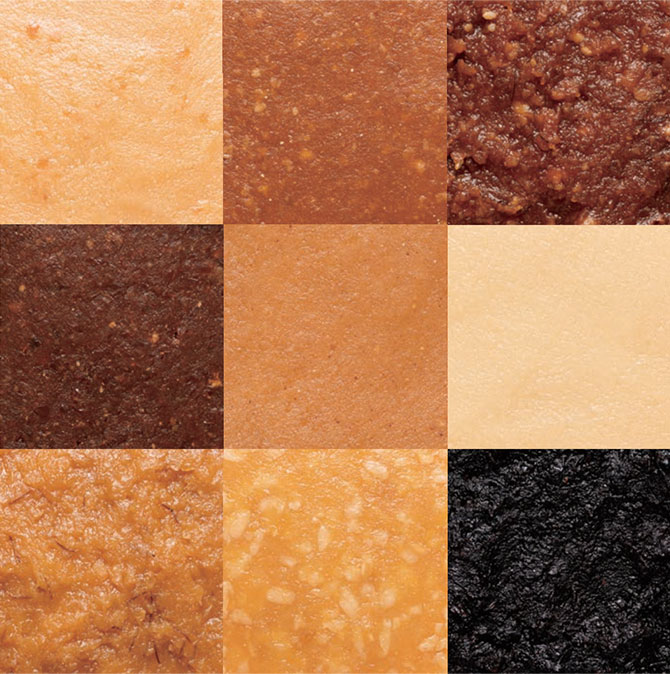
The joy of discovering your own favorite MISO
From the salt, soybeans, and koji constituting the main raw materials to factors such as geographical characteristics and climate, various factors contribute to the creation of a vast and diverse array of MISO. The type of MISO used may vary depending on the season of the other ingredients or the types of cuisine being made. One can also enjoy the wonderful process of combining various types of MISO to create new tastes and flavors. The first step is to try various flavors to discover your own favorite MISO.

